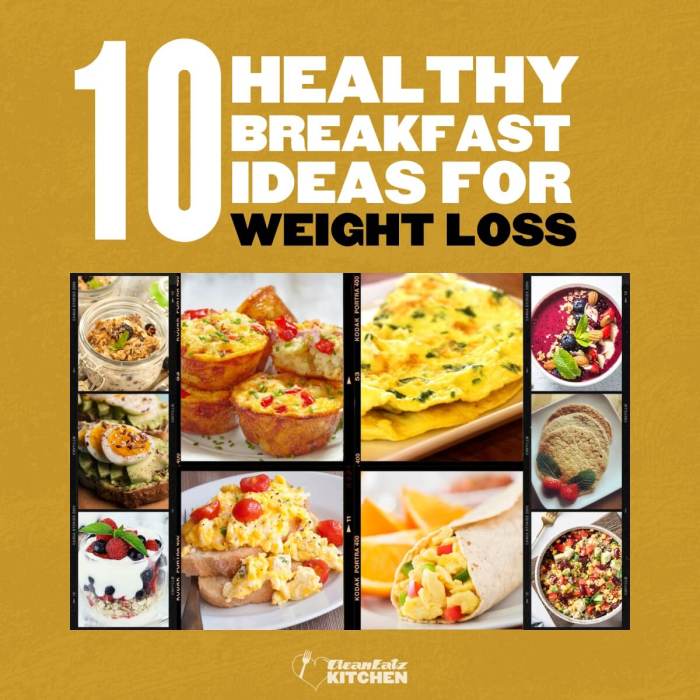
5 smoothie mistakes that make you gain weight. Smoothies are often touted as healthy, but the wrong ingredients and preparation methods can sabotage your weight loss goals. Hidden sugars, excessive fruit, and neglecting essential nutrients can quickly turn a seemingly nutritious drink into a calorie bomb. This post will expose the five most common smoothie mistakes that can lead to weight gain, arming you with the knowledge to create delicious and slimming smoothies instead.
We’ll delve into the nutritional breakdown of common smoothie ingredients, highlighting how calories, macronutrients, and portion sizes play a crucial role in your weight management journey. Understanding these key elements will empower you to make informed choices and avoid unwanted weight gain.
Understanding Weight Gain from Smoothies
Smoothies, often touted as healthy and convenient, can surprisingly contribute to weight gain if not approached mindfully. The perception of a smoothie as a “nutritious” beverage often overshadows the potential for hidden calories, unhealthy ingredients, and poor portion control to lead to unwanted weight gain. This misconception stems from the idea that blending fruits and vegetables automatically creates a healthy, low-calorie option.
However, this isn’t always the case.The key to understanding weight gain from smoothies lies in understanding the interplay of calories, macronutrients, and portion sizes. Smoothies can easily pack a high calorie punch if ingredients are not carefully selected and portions are not managed. Furthermore, hidden sugars and unhealthy ingredients can contribute to a significant calorie intake without providing much nutritional value.
Therefore, mindful consumption and portion control are crucial for reaping the benefits of smoothies without hindering weight management goals.
The Misconception of Smoothie Health
The allure of smoothies often leads people to believe they are a magic bullet for weight loss or a healthy indulgence. This is a common misconception, as smoothies, like any other food or beverage, can contribute to weight gain if not consumed responsibly. They are not inherently healthy or automatically conducive to weight loss. The nutritional value and calorie content depend heavily on the ingredients used.
Calories, Macronutrients, and Portion Sizes in Smoothies
Smoothies can easily become calorie-dense if high-calorie ingredients are included in large portions. The total calorie count from the ingredients, such as fruits, yogurt, and protein powder, significantly influences weight gain or loss. A smoothie packed with high-sugar fruits and large portions of dairy products can quickly surpass the calorie needs of a meal, leading to weight gain.
The macronutrient balance (protein, carbohydrates, and fat) in a smoothie also plays a critical role. An imbalance can affect metabolism and contribute to fat storage. It is essential to be mindful of the balance of macronutrients and the portion sizes to maintain a healthy lifestyle.
Hidden Sugars and Unhealthy Ingredients
Many smoothies contain hidden sugars, especially those made with sweetened fruits or added syrups. These hidden sugars contribute to a rapid rise in blood sugar, leading to potential weight gain. Some smoothies may include unhealthy ingredients, such as excessive amounts of added sugar, artificial sweeteners, or unhealthy fats, contributing to a calorie intake that outweighs nutritional value. Understanding the nutritional content of each ingredient is crucial for creating healthy smoothie recipes.
Mindful Consumption and Portion Control
Mindful consumption and portion control are essential for consuming smoothies without hindering weight management goals. Paying attention to the ingredients and portion sizes allows for a more balanced and controlled approach. Small portions are crucial for managing calories and preventing overconsumption. Consider the nutritional value and calorie density of the ingredients to make informed choices about portion sizes.
Common High-Calorie/Sugar Smoothie Ingredients
Many commonly used smoothie ingredients are high in calories or sugar, such as:
- Sweet fruits: Mangoes, bananas, and berries, while healthy in moderation, can contribute significantly to the sugar content of a smoothie.
- Honey or syrups: Added sweeteners, such as honey or syrups, significantly increase the calorie and sugar content.
- Dairy products: Yogurt, milk, and cream contribute to calories and can quickly increase the overall calorie count of a smoothie.
Nutritional Profile Comparison of Smoothie Ingredients
This table provides a general overview of the nutritional profiles of various smoothie ingredients:
| Ingredient | Calories (per 100g) | Protein (per 100g) | Sugar (per 100g) |
|---|---|---|---|
| Banana | 90-110 | 1-2g | 20-25g |
| Strawberry | 30-40 | 0.5-1g | 6-8g |
| Greek Yogurt | 100-150 | 10-15g | 10-12g |
| Protein Powder | 100-200 | 20-40g | 5-10g |
Note: Nutritional values may vary based on specific brands and types of ingredients.
Mistake #1: Excessive Fruit Intake
Smoothies are a popular way to get your daily dose of fruits and vegetables, but too much of a good thing can sometimes be detrimental to your health goals. One common mistake is overloading on fruit, which can lead to an unexpected calorie and sugar overload, potentially hindering weight loss efforts. Understanding the sugar content and impact of different fruits is crucial for crafting healthy and effective smoothie recipes.High-fructose fruits, abundant in many smoothie recipes, contribute significantly to weight gain.
The natural sugars in fruits, while essential nutrients, can quickly raise blood sugar levels if consumed in excess. This rapid increase can trigger the body to store the excess sugar as fat, leading to a calorie surplus and hindering weight management. Different fruits vary in their sugar content, which influences their impact on blood sugar and potential for fat storage.
Sugar Content of Common Smoothie Fruits
Fruits commonly used in smoothies vary significantly in their sugar content. This difference is crucial to consider when balancing your smoothie recipe. Excessive consumption of high-sugar fruits can lead to a significant calorie surplus, potentially contributing to weight gain. A balanced approach that considers the sugar content of different fruits is vital for crafting healthy smoothies.
| Fruit | Approximate Calories (per 100g) | Approximate Sugar Content (per 100g) |
|---|---|---|
| Banana | 90-100 | 20-25g |
| Mango | 60-70 | 15-18g |
| Strawberry | 30-40 | 8-10g |
| Pineapple | 50-60 | 12-15g |
| Blueberries | 50-60 | 10-12g |
| Orange | 45-55 | 10-12g |
Strategies for Moderating Fruit Intake, 5 smoothie mistakes that make you gain weight
Moderating fruit intake in smoothies without compromising flavor is achievable. A few key strategies include:
- Balancing with Vegetables: Incorporating a higher volume of vegetables like spinach, kale, or cucumber into your smoothie can significantly reduce the sugar content while increasing the nutritional value. This approach ensures a more balanced nutrient profile and helps manage the calorie density.
- Choosing Lower-Sugar Fruits: Opt for fruits lower in natural sugars like berries, which offer a sweet flavor without the same calorie and sugar punch as bananas or mangoes. This strategic choice helps maintain a healthy balance in your smoothie.
- Portion Control: Careful portion control of fruits is essential for managing sugar and calorie intake. A smaller amount of higher-sugar fruits can be just as satisfying as a larger amount while reducing the impact on blood sugar levels.
- Utilizing Fruit Combinations: Experiment with a variety of fruit combinations to find a balance that satisfies your taste preferences. A mix of lower-sugar and higher-sugar fruits can create a more balanced smoothie.
Mistake #2: Inadequate Protein and Fiber
Smoothies, while often touted as healthy, can sometimes backfire on your weight management goals. One crucial element often overlooked is the balance of protein and fiber. These nutrients are essential for feeling full and satisfied, preventing overeating and regulating blood sugar levels. Ignoring this balance can lead to a vicious cycle of cravings and ultimately, hinder your weight loss efforts.Protein and fiber are vital components of a healthy diet, and smoothies are no exception.
Their presence in a smoothie helps promote satiety, which means you feel fuller for longer after consuming it. This, in turn, helps to prevent overeating throughout the day and keeps blood sugar levels more stable, which can minimize cravings. Without sufficient protein and fiber, a smoothie might provide a quick burst of energy followed by a sharp drop, leaving you hungry and reaching for more.
Importance of Protein and Fiber in Smoothies
Protein and fiber work together to create a feeling of fullness and control blood sugar. A smoothie high in protein and fiber slows down digestion, preventing a rapid rise in blood sugar that often leads to crashes and cravings. This sustained energy release contributes to a more stable mood and prevents the energy fluctuations that can trigger overeating.
Protein and Fiber-Rich Ingredients
Many delicious and nutritious ingredients can enrich your smoothies with protein and fiber. These include:
- Protein Powders: Whey protein, casein protein, and soy protein are readily available and easily mixed into smoothies. They offer a significant protein boost, helping you feel satisfied and supporting muscle repair and growth.
- Greek Yogurt: A fantastic source of protein and probiotics, Greek yogurt adds a creamy texture and tangy flavor to smoothies. Choose plain, non-fat varieties to maximize nutritional value.
- Chia Seeds and Flax Seeds: These tiny powerhouses are packed with fiber and healthy fats, providing a substantial boost to satiety and promoting digestive health. Their mild flavor blends seamlessly into most smoothies.
- Nuts and Seeds: Almonds, walnuts, pumpkin seeds, and sunflower seeds offer a concentrated dose of protein, healthy fats, and fiber. A handful added to your smoothie adds a satisfying crunch and a nutty flavor.
- Leafy Greens: Spinach, kale, and romaine lettuce are excellent sources of fiber and vitamins, adding a nutritional boost to your smoothie without impacting taste significantly.
Comparing Protein Sources
Different protein sources offer varying nutritional profiles. Whey protein is a fast-digesting protein, ideal for post-workout recovery. Casein protein is a slow-digesting protein, helping to sustain satiety for longer periods. Greek yogurt provides a good balance of protein and probiotics.
Nutritional Value of Smoothie Additions
The table below provides a general overview of the protein and fiber content of some common smoothie additions. Keep in mind that specific values may vary depending on the brand and preparation method.
| Ingredient | Protein (grams) | Fiber (grams) |
|---|---|---|
| 1 scoop Whey Protein | 20-30 | 1-2 |
| 1 cup Greek Yogurt | 15-20 | 4-6 |
| 1/4 cup Chia Seeds | 2-3 | 8-10 |
| 1/4 cup Almonds | 6-8 | 2-3 |
| 1 cup Spinach | 1-2 | 2-3 |
Incorporating Protein and Fiber Without Compromising Taste
Adding protein and fiber to your smoothies doesn’t have to mean sacrificing flavor. Experiment with different combinations of ingredients to find what you enjoy. For example, using vanilla protein powder with banana and spinach can mask the taste of spinach effectively. Adding a touch of cinnamon or nutmeg can enhance the flavor of the smoothie. Also, don’t be afraid to adjust the sweetness levels to your liking.
Mistake #3: Hidden Calories from Additives

Smoothies are often touted as a healthy breakfast or snack, but the addition of certain ingredients can quickly turn a nutritious drink into a calorie bomb. Hidden calories from seemingly harmless additives can easily contribute to weight gain, often exceeding what you’d expect from the basic fruit and liquid base. Understanding these hidden caloric culprits is crucial for maintaining a healthy smoothie routine.Common smoothie ingredients, while seemingly innocuous, can significantly impact your calorie count.
Honey, syrups, and nut butters, often used to sweeten or add richness, are packed with calories. These additions can easily lead to exceeding your daily recommended caloric intake, often without you realizing it.
Hidden Calories in Common Smoothie Ingredients
These seemingly small additions can significantly increase the calorie density of your smoothie. Honey, for example, is a concentrated source of sugar, and even a tablespoon can add a substantial amount of calories. Syrups, similarly, are often high in sugar and contribute significantly to the overall caloric load. Nut butters, while providing healthy fats, also have a high calorie density, and using even a moderate amount can quickly elevate the calorie count.
The combination of these additives can easily lead to a smoothie that provides more calories than you need, even if it seems like a healthy choice.
Role of Additives in Calorie Intake
The role of these additives is directly related to their calorie density. A tablespoon of honey, for instance, can contain 20-25 calories, a significant contribution to your daily intake. A similar amount of syrup can easily provide a similar amount or more. Nut butters, depending on the type and quantity, add a substantial number of calories and fats, and a single serving can contribute hundreds of calories.
Ever wondered why those seemingly healthy smoothies are sabotaging your weight loss goals? There are some sneaky smoothie mistakes that can lead to unwanted pounds. Thinking about your future, it’s crucial to start planning for retirement early. Luckily, 6 retirement plans millennials should start thinking about embrace asap can help you get started. But back to those smoothies, avoiding these common pitfalls can make a big difference in your results.
High-sugar fruit and hidden carbs are major culprits.
Exceeding Recommended Daily Caloric Intake
The impact of these additives on exceeding daily caloric intake is substantial. If you’re not careful, a smoothie with added honey, syrup, or nut butter can easily exceed your recommended daily caloric intake, especially if consumed frequently. This can lead to weight gain and other health issues over time. For example, if your daily calorie goal is 1500, a smoothie with 300 calories from added ingredients can be a considerable portion of your daily allowance.
Healthy Alternatives to Additives
Replacing these additives with healthier options is crucial for maintaining a balanced smoothie. Consider using fruit itself for sweetness, as it naturally contains sugars and fiber. Alternatively, consider using a small amount of stevia or monk fruit for a natural, calorie-free sweetener. For nut butter, opt for lower-calorie varieties or use smaller quantities.
Table: Calorie Density of Smoothie Additives
| Additive | Approximate Calories (per tablespoon/serving) |
|---|---|
| Honey | 20-25 |
| Maple Syrup | 25-30 |
| Nut Butter (peanut, almond) | 100-150 |
| Stevia | 0 |
| Monk Fruit | 0 |
Importance of Reading Labels
Understanding ingredient nutritional information is paramount. Carefully reading labels on smoothie ingredients, especially those containing additives, is essential. Paying close attention to serving sizes and calorie counts will help you to accurately assess the nutritional content of your smoothie. This proactive approach allows you to make informed decisions about your choices, promoting better control over your calorie intake.
Mistake #4: Skipping Meals or Overeating with Smoothies: 5 Smoothie Mistakes That Make You Gain Weight
Smoothies can be a convenient and nutritious addition to a healthy lifestyle. However, if not incorporated thoughtfully, they can sometimes contribute to weight gain rather than support weight loss goals. This often stems from using smoothies as meal replacements without a comprehensive understanding of portion sizes, nutritional needs, and how they affect your body’s natural hunger and fullness cues.
Potential for Meal Replacement Issues
Smoothies can easily become a substitute for balanced meals, particularly if they’re not planned alongside a holistic approach to nutrition. This is especially true if a person is not aware of the calories, protein, and fiber content of their smoothie recipe. A smoothie that appears healthy can, in reality, be high in sugar and calories, negating any positive effects and potentially leading to weight gain.
Ever wondered why those healthy-sounding smoothies sometimes pack on the pounds? It’s not always about the ingredients; it’s about the execution. Avoiding common smoothie mistakes is key to weight management, just like duplicating the common traits successful people requires understanding their strategies. Too much fruit, skipping protein, or blending until it’s too smooth can all sabotage your healthy smoothie goals.
Learning to avoid these 5 smoothie mistakes will help you reach your weight goals.
Overeating and Smoothie Consumption
The potential for overeating exists when smoothies are used as primary meal replacements. Without the proper structure of a balanced meal, individuals might overcompensate for a smoothie-centric diet by consuming larger portions of food at other meals or snacking excessively between meals. This can lead to an overall calorie surplus, hindering weight loss efforts.
Ever wondered why those healthy-sounding smoothies sometimes pack a surprising calorie punch? I’ve got 5 smoothie mistakes that can sabotage your weight loss goals. Knowing how to make the most of your smoothies is key, but if you’re also a runner, incorporating some of the 11 greatest running tips and tricks into your routine can help balance things out.
Still, focusing on avoiding those smoothie pitfalls is crucial for staying on track. These 5 common errors are often the reason why smoothies aren’t always the weight-loss miracle they’re cracked up to be.
Impact on Hunger Cues and Blood Sugar
Smoothies, especially those high in sugar, can impact hunger cues and blood sugar regulation. The rapid absorption of sugars in a smoothie can lead to a spike in blood sugar, followed by a subsequent crash. This fluctuating blood sugar can trigger feelings of hunger and cravings, leading to overeating later in the day. Properly balanced meals, on the other hand, provide sustained energy and stable blood sugar levels.
Importance of Balanced Meals
Balanced meals that incorporate complex carbohydrates, lean proteins, and healthy fats are crucial to complement smoothies. These meals provide a slower release of energy, regulate blood sugar levels, and keep you feeling full and satisfied for longer periods. This helps prevent overeating and encourages a more sustainable approach to weight management.
Incorporating Smoothies into a Balanced Meal Plan
Smoothies can be effectively incorporated into a balanced meal plan as part of a larger strategy. Instead of relying on them as the primary source of nutrition, use them to supplement your meals or as a healthy snack. The key is to ensure the smoothie fits into a larger meal plan that provides a good mix of nutrients.
Smoothie Combinations and Complementary Meals
| Smoothie Combination | Complementary Meal |
|---|---|
| Spinach, banana, almond milk, protein powder | Whole-wheat toast with avocado and a side salad |
| Berry, spinach, Greek yogurt, chia seeds | Grilled chicken breast with brown rice and steamed vegetables |
| Mango, pineapple, banana, almond butter | Lean turkey breast sandwich on whole-wheat bread with a side of mixed greens |
| Green apple, celery, cucumber, almond milk, protein powder | Lentil soup with a whole-grain roll |
Mistake #5
Smoothies can be a healthy addition to your diet, but like any food, portion control and frequency are crucial. Overdoing it can easily lead to unwanted weight gain. This mistake often goes unnoticed because smoothies can be perceived as a healthy option, but the sheer volume and calorie density of some can easily surpass your daily needs.Large serving sizes and frequent consumption are often intertwined.
A large smoothie, enjoyed multiple times a day, can quickly add up calories and contribute to a calorie surplus. Understanding the calorie content and appropriate portion sizes is essential to prevent unwanted weight gain.
Portion Control and Frequency
Smoothies, despite their potential health benefits, can become a source of unwanted calories if consumed in large quantities or too frequently. Portion control and the frequency of consumption are vital aspects to consider when incorporating smoothies into your diet. Excessive consumption can easily lead to a calorie surplus, negating the health advantages and potentially contributing to weight gain.
Calorie Content Comparison
The calorie content of a smoothie varies significantly based on ingredients and portion size. A small smoothie made with mostly fruits and vegetables might contain around 200-300 calories, while a large smoothie loaded with fruit, yogurt, and added sweeteners can easily surpass 500 calories. The differences in ingredients dramatically affect the calorie count.
Reasonable Serving Sizes
A reasonable serving size for a smoothie depends on individual needs and dietary goals. Aim for a smoothie that fills you up without leaving you feeling overly full or craving more. A 16-ounce smoothie can easily be too large for most individuals. Focusing on portion sizes that align with your daily calorie intake is important. For instance, a 10-ounce smoothie made with fruits and vegetables, protein powder, and a small amount of liquid is a more reasonable portion size.
If you are aiming for a thicker smoothie, consider using a smaller serving size.
Smoothie Portion Sizes Relative to Daily Calorie Needs
| Daily Calorie Needs | Recommended Smoothie Serving Size (oz) ||—|—|| 1800-2000 Calories | 10-12 oz || 2000-2500 Calories | 12-16 oz || 2500+ Calories | 16 oz max, with careful monitoring |This table provides a general guideline. Individual needs may vary, and it’s crucial to listen to your body and adjust portions accordingly.
“Moderation and balance are key to incorporating smoothies into a healthy diet without hindering weight management goals.”
Importance of Moderation and Balance
Excessive consumption of smoothies, even healthy ones, can lead to a calorie surplus. A balanced diet that incorporates whole foods, alongside moderate smoothie consumption, is crucial for optimal health and weight management. It’s important to consider the overall dietary picture when including smoothies.
Concluding Remarks

So, there you have it – 5 common smoothie mistakes that can hinder your weight loss efforts. By understanding the nutritional profile of ingredients, moderating fruit intake, incorporating essential protein and fiber, being mindful of hidden calories, and practicing portion control, you can enjoy the benefits of smoothies without jeopardizing your health goals. Remember, a balanced approach is key to maximizing the nutritional value of your smoothies and enjoying them as part of a healthy lifestyle.
Armed with this knowledge, you can create delicious, weight-conscious smoothies that support your overall well-being.





